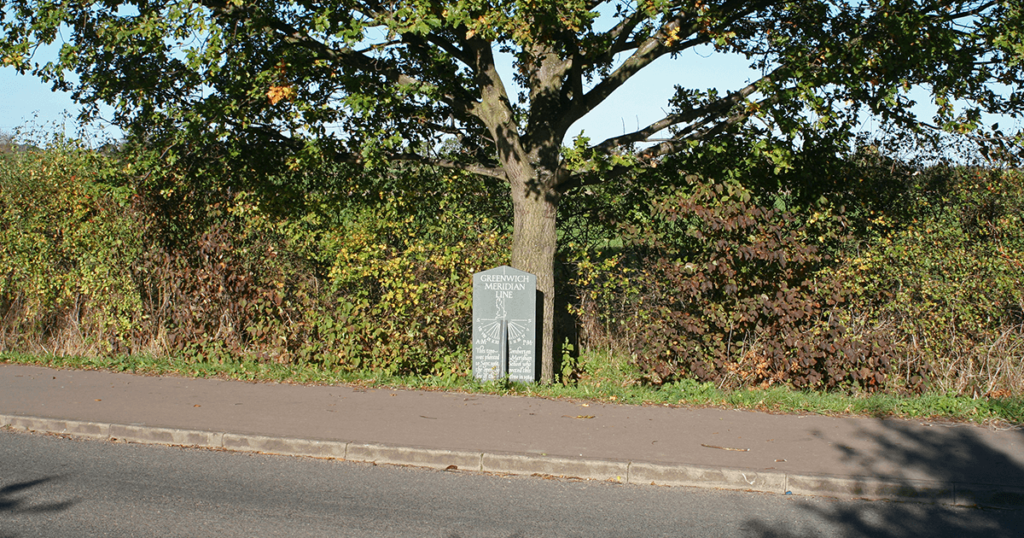
On my regular route, on a downhill just steep enough to make me feel that my bicycle has a mind of its own, lurks a nasty pothole. I often see it at the very last moment and manage to zag toward the curb. Usually this works, but it’s a sweaty few seconds. On one rare occasion, though, I remember the divot beforehand, giving me time to look around. And wouldn’t you know it, on the other side of the road, under an oak tree, there is a stone marker that says, “Greenwich Meridian Line.”
All these bike rides I had blithely crossed Longitude 0! Back and forth like some sort of Prime Meridian hopscotch. I’m not sure how this improves my life—I’m not deeply involved in the transatlantic shipping trade. But psychologically, I feel as if I’ve evened myself out; it’s satisfying to start at zero and work from there. An invisible line, yes, but, somehow, I’m opening a new book, using a fresh sponge, and having my first kiss all at once.
The village of Comberton is right down the road from the meridian marker (it’s actually a sundial). The village has a secondary school, a little market shop, a bus stop, and a hair salon with a wide front window. Compared with the crowds in Greenwich—sneakered tourists straddling the painted line for a photo—it shoulders its chronological importance humbly, if at all. For me, the stone marker serves two purposes: a quick reset from schoolwork and immigration forms, and, a reminder that there’s a wheel-bending pothole just ahead.
Reader’s Note: Every day for the next couple of weeks, we’ll be presenting new entries from “Along the River Cam.” Check here for the latest post.

